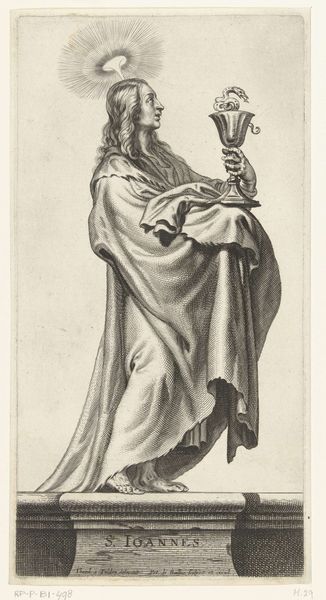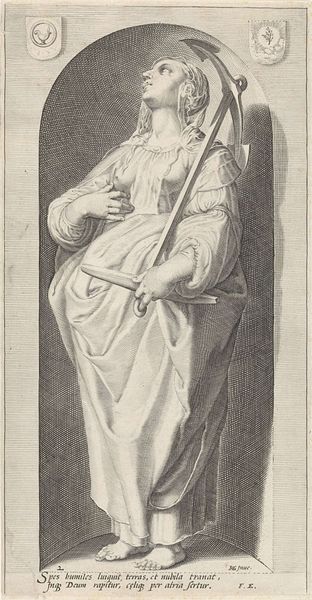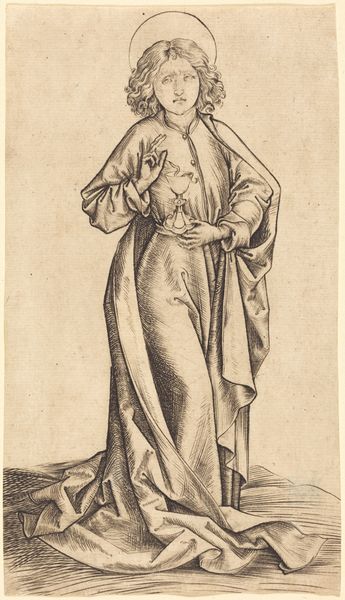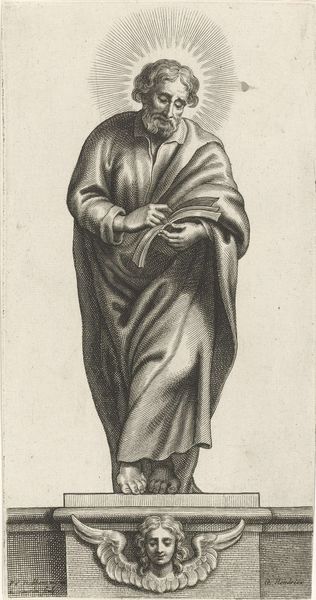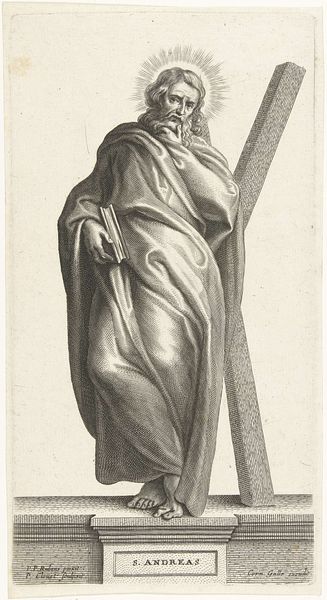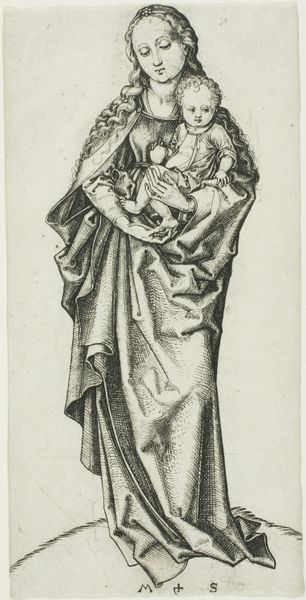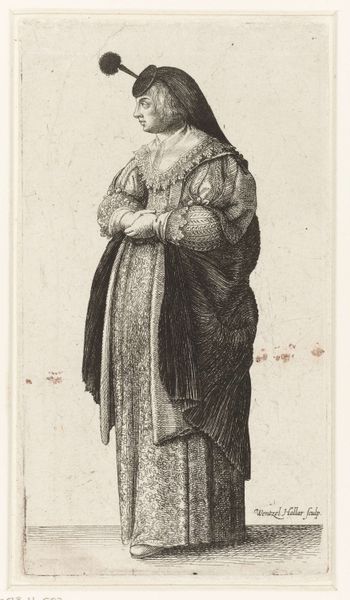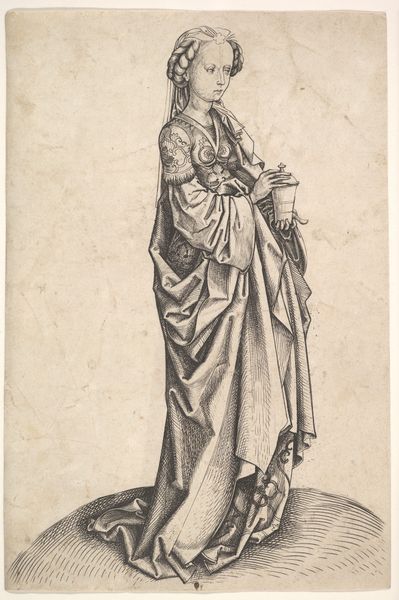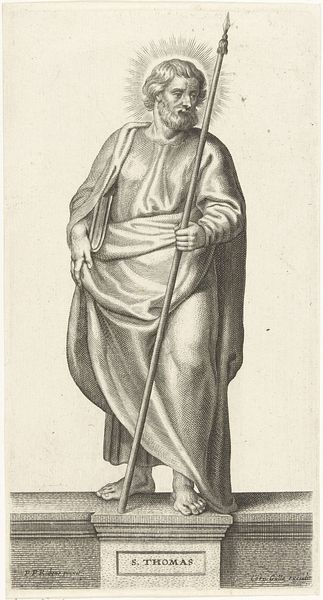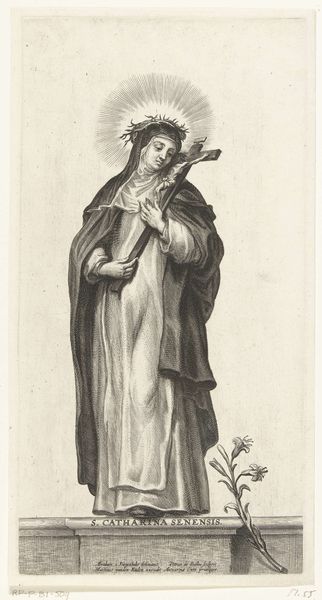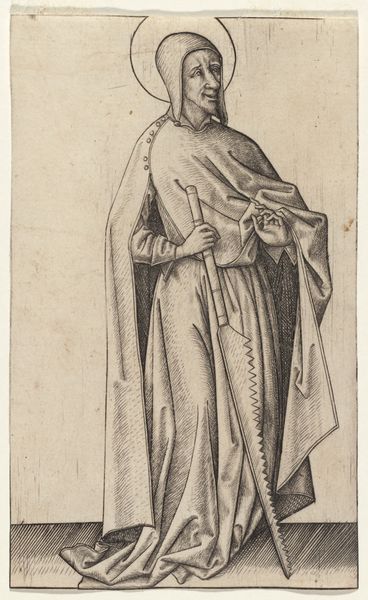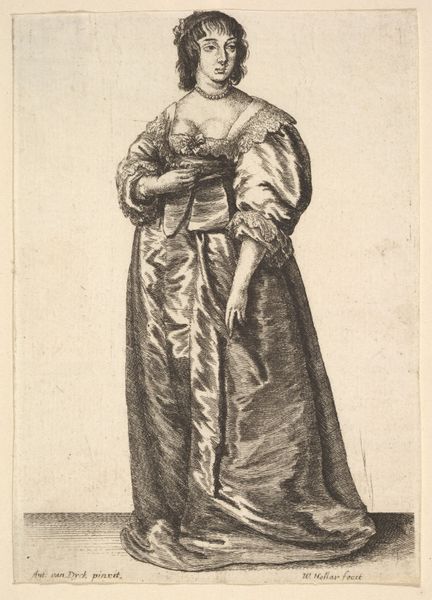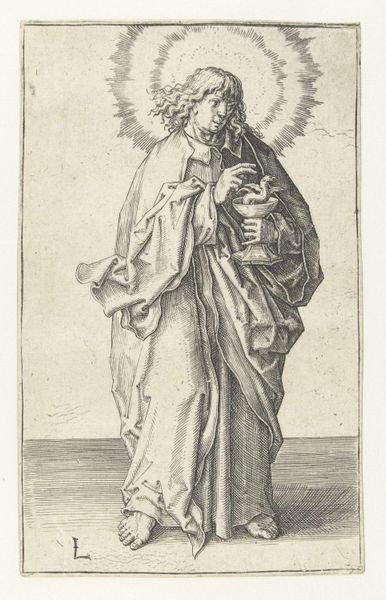
print, etching
#
portrait
#
baroque
# print
#
etching
#
charcoal drawing
#
figuration
#
historical photography
#
portrait drawing
#
history-painting
Dimensions: height 253 mm, width 135 mm
Copyright: Rijks Museum: Open Domain
Curator: Looking at this intriguing image entitled "Portret van een onbekende vrouw", a work dated sometime between 1639 and 1670, attributed to Petrus Clouwet, what is your initial take? Editor: The sheen! My eyes are drawn immediately to the textile representation—it gives the impression of a rich silkiness achieved purely through etched lines. How can mere marks evoke such tactile experience? Curator: Absolutely, the artist brilliantly conveys the luxury and social status, playing with cultural symbols. The large ruff around her neck and the ermine lining point towards wealth and power. How do you interpret her stance, that sort of elevated positioning? Editor: Placing her on a pedestal does literalize power dynamics but notice that this is achieved via reproductive printmaking techniques. Images like these would spread quickly and widely through burgeoning early-modern consumer markets. Curator: Yes, it speaks volumes about the production of images in the era, mass media through reproducible techniques. And yet, within this spread of reproduced imagery lies an echo chamber of visual rhetoric. The unknown woman mimics idealized visual characteristics of royal portraiture. Does she mirror royalty to reflect their splendor, or appropriate power to mimic it for herself? Editor: It is also noteworthy the medium itself flattens textures while reproducing them and making such fashion available. A democratization via production is being sold back as privilege here, perhaps? Curator: That adds another layer to it, doesn’t it? The medium influences how the symbol is interpreted. Think, too, about how certain forms endure and repeat across epochs to shape and influence concepts of female presentation to this day. Editor: Exactly, print culture commodifies material aesthetics—circulating class aspiration in ways not dissimilar to influencer culture of the current digital age. The endless pursuit and replication, and our continued fascination. Curator: So well put! Seeing this through a material and semiotic lens allows us to not only appreciate the skill involved but also understand the lasting impact on image-making. Editor: Precisely. Looking at these images this closely allows us to decode those historical strategies of how desire itself gets manufactured through visual economies of production.
Comments
No comments
Be the first to comment and join the conversation on the ultimate creative platform.
